
do you feel the same
范尼·吉奎尔
Fanny Gicquel
展期 Duration
2021.02.27
-
2021.05.15
地址 Location
Potsdamer Str. 81B
10785 BERLIN
致谢 | 编舞:爱丽丝·海沃德;行为表演:塔诺斯·弗莱达斯、莉亚·卡茨、莉亚·马罗杰维奇,米奇·马哈尔及路易莎·萨赖瓦;编曲:Delawhere; 摄像:Robert Rieger 与 Timo Ohler;摄影:Agustín Farías
Credits | choreographer: Alice Heyward; dancers: Thanos Frydas, Leah Katz, Leah Marojević, Mickey Mahar, and Luísa Saraiva; Composer: Delawhere; Photos by Robert Rieger and Timo Ohler, Video by Agustín Farías.
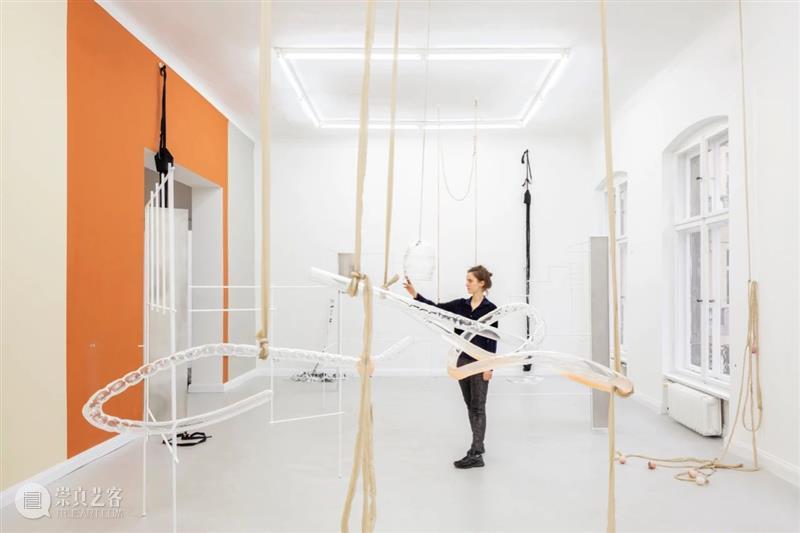
户尔柏林空间很荣幸为您呈现由艺术家范尼·吉奎尔带来的展览-行为艺术项目 do you feel the same,同时这也是艺术家首次在画廊空间的个展。范尼·吉奎尔想象中的世界并不单单是由分割独立的实体所组成的空间,而是一个多样且动态的星群,期间充斥着混合,交融,亦或者分歧与干涉。展览 do you feel the same 阐述了在三种“体态”的展示形式下,一系列的雕塑性行为艺术的混合:机械房间/身体,梦境房间/身体与记忆房间/身体;所有这些都不同程度地凸显了孤立与联系的首要性,以及在这些状态之间的游移。
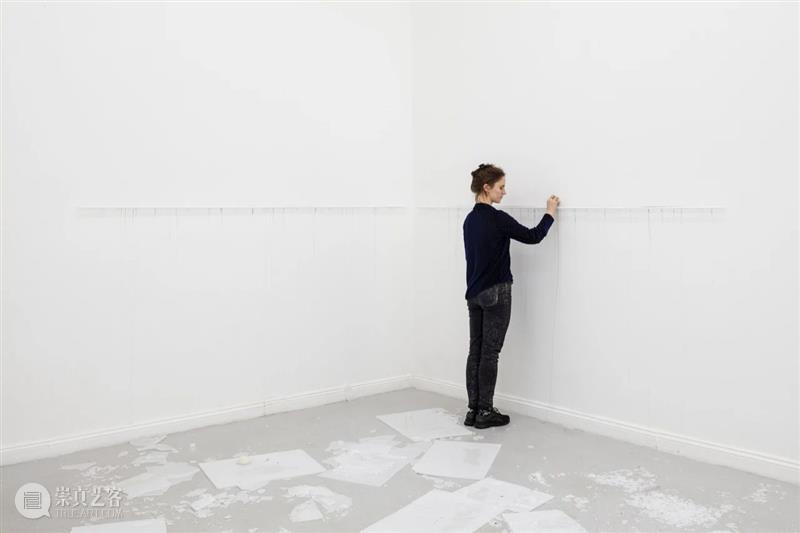
哲学家让-吕克·南希(Jean-Luc Nancy)将身体描述为边界,在那里一切发生,故事缓缓展开。“身体并不是某种实在或者被填满的空间”他写道,“它们是开放的空间,在某种意义上,开阔的场域或许是更为恰当的描述,因此它们也可以被称为‘场所’;身体是存在的场所,任何事物的存在都离不开一个场所:‘彼处’,或‘此地’,‘此地’也正是为了‘这个’。” 正如南希所论述,这个边界,即身体发生的界限;在吉奎尔的作品之中其便以可塑的区域而呈现,而边缘与界限则永远尚在商榷。
The philosopher Jean-Luc Nancy describes the body as limit, an unfolding, a place where things happen. “Bodies aren't some kind of fullness or filled space,” he writes, “they are open space, implying, in some sense, a space more properly spacious than spatial, what could also be called a place. Bodies are places of existence, and nothing exists without a place, a there, a ‘here,’ a ‘here is,’ for a ‘this.’” This border, the limit where the body takes place, as Nancy argues, appears in Gicquel’s work as a malleable zone that perpetually negotiates its edges or boundaries.
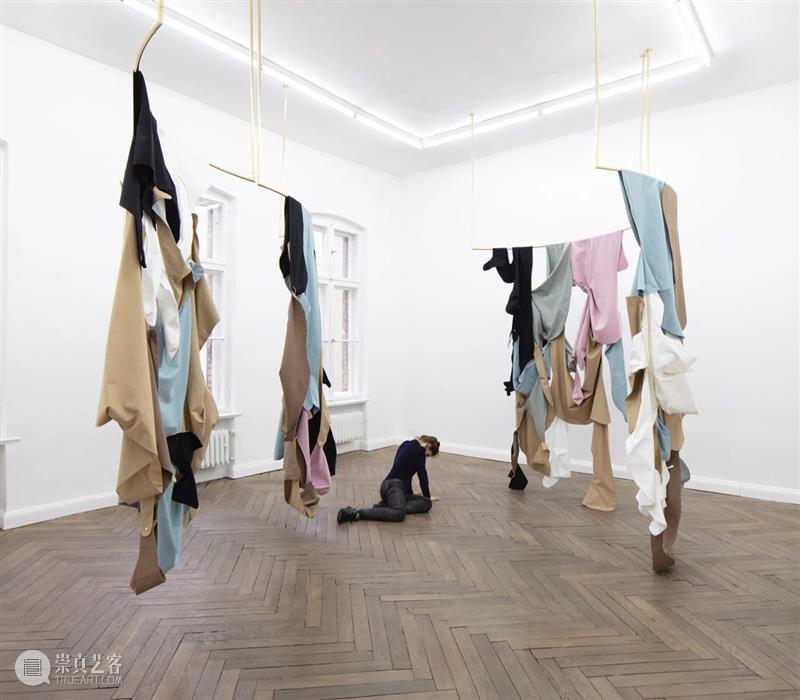
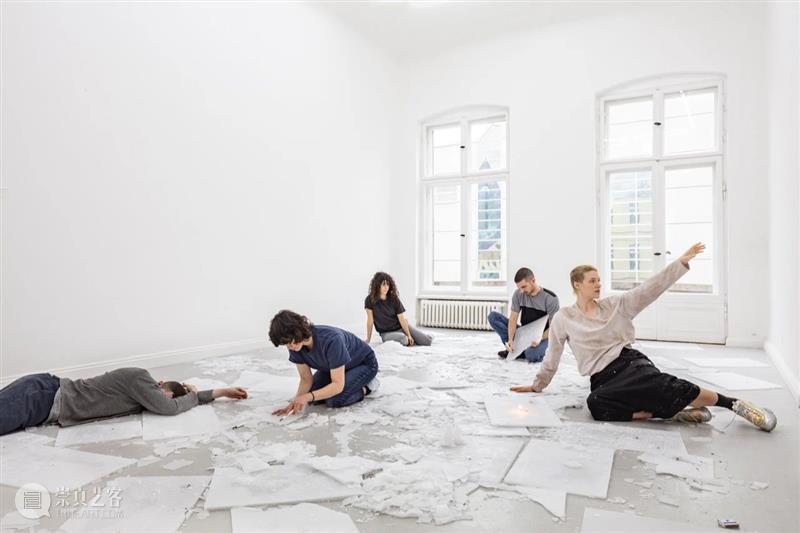
你的内在与外界如何交织?你是不是也曾梦到过住在一个和你身体一般大的房间?你也认为记忆会变成血肉吗?像这样的问题,通过表演者之间的开放式对话出现,他们在记忆房间/身体中把抽象的标记刻在大块的石蜡上,或者把石蜡分解成更小的碎片。在这个清凉的单色房间中,这些行为,部分是脚本,部分则为即兴,在记忆汇聚的小池塘之中,模糊了个人和群体、亲密与一般之间的区别。交织在一起的有着抽象形状的布料从梦境房间/身体中两组弧形铜臂架上垂下。这种精巧的形状纠缠在一起,影影绰绰,像解构的休闲服,却还保留着穿戴者残留的温度。
What is the relationship between your inside and outside? Do you ever dream of living in a house as big as your body? Do you think memory becomes blood in our bodies? Such questions emerge through an open-ended dialogue between performers as they carve abstract markings into large slabs of paraffin or break them down into smaller fragments in the memory body room. In the space of this cool, monochrome room, these collaboratively generated reflections draw upon a pool of memory that blurs the distinctions between individual and collective, intimate and generic. Interwoven, abstract textile forms dangle from two sets of curved brass armatures in the dream room/dream body. There is something vaguely corporeal about this delicate tangle of shapes, like skeins of deconstructed loungewear that still retain some trace of the warmth of their wearer.
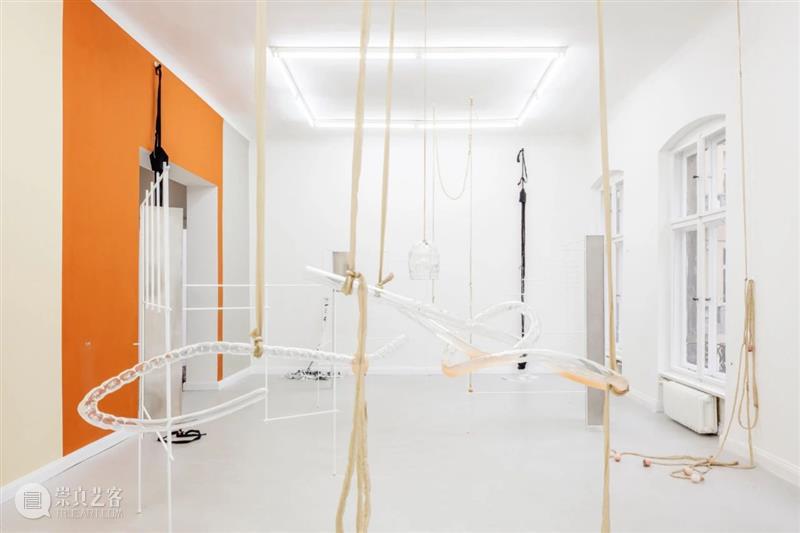
在机械房间/身体中,悬挂的玻璃与纺织作品围绕着四个开放式钢制装置,勾勒出了寻常生活空间的骨骼轮廓。表演者在这些作品之中做出一系列熟悉的、看似潜意识的姿势,而这些动作却毫无实义的指向:下蹲、扭曲、按压、转动。这个房间/身体,就如同整个展览的理念一样,是一个鲜活的有机体,也是一个可居住的场所,通过运动和触摸继而不断地重新配置。正如南希所论述到:"身体为存在提供了场所"。在这里展开的瞬息万变的装置与姿势情境,质疑并揭示了一种多元渗透,既是在亲密与一般、内部与外界之间的模糊。唤醒了生命与梦想,让它们在这隐藏的、敞露的、私人的和共通的空间中寄居。
In the machine room/machine body, suspended glass and fabric works surround four, open-frame steel sculptures that propose skeletal outlines of domestic living space. The performers enact series of familiar, automatic-seeming gestures among these objects that nonetheless seem to have lost their referent: squatting, twisting, pressing, turning. This body-room, like the entire project, is a living organism, a space to be inhabited, continually re-configured through movement and touch. As Nancy writes, “the body makes room for existence.” The fleeting sculptural and gestural situations that unfold here question and reveal a porosity, an ambiguity between the intimate and the impersonal, interiority and exteriority, waking life and dreams to come to dwell in the space between what is hidden, what is shared, what is one’s own, and what is common.
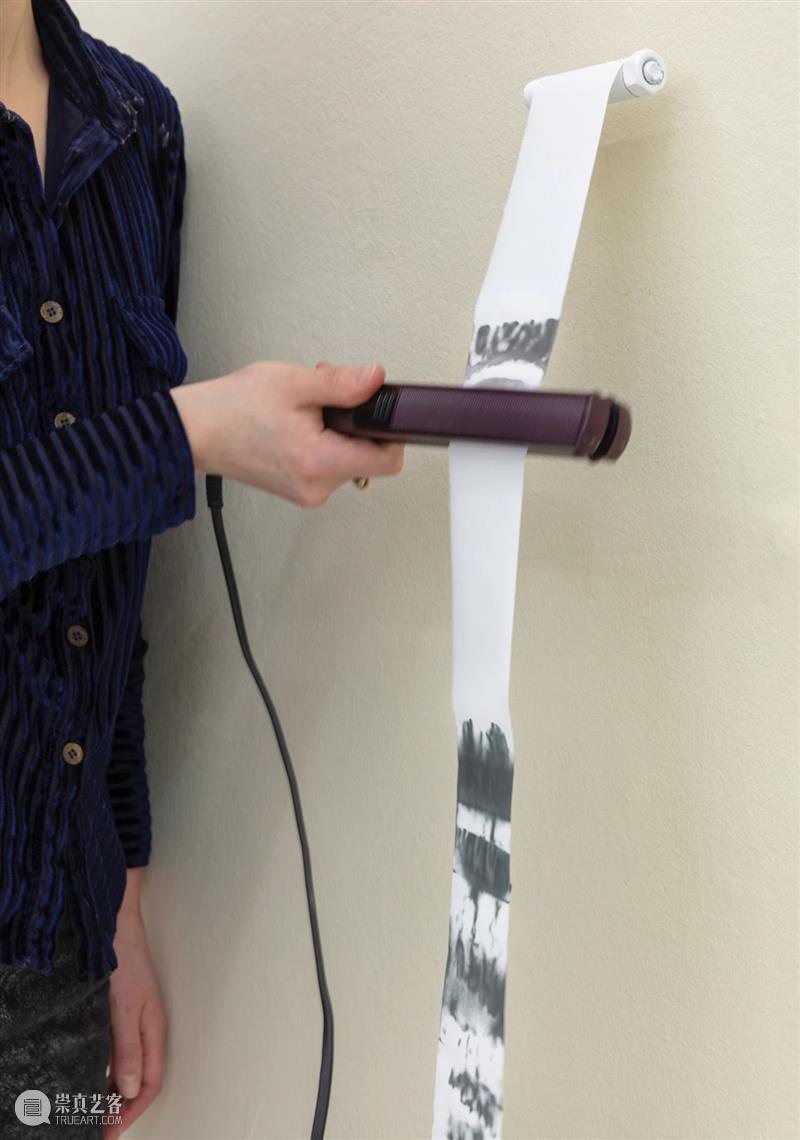
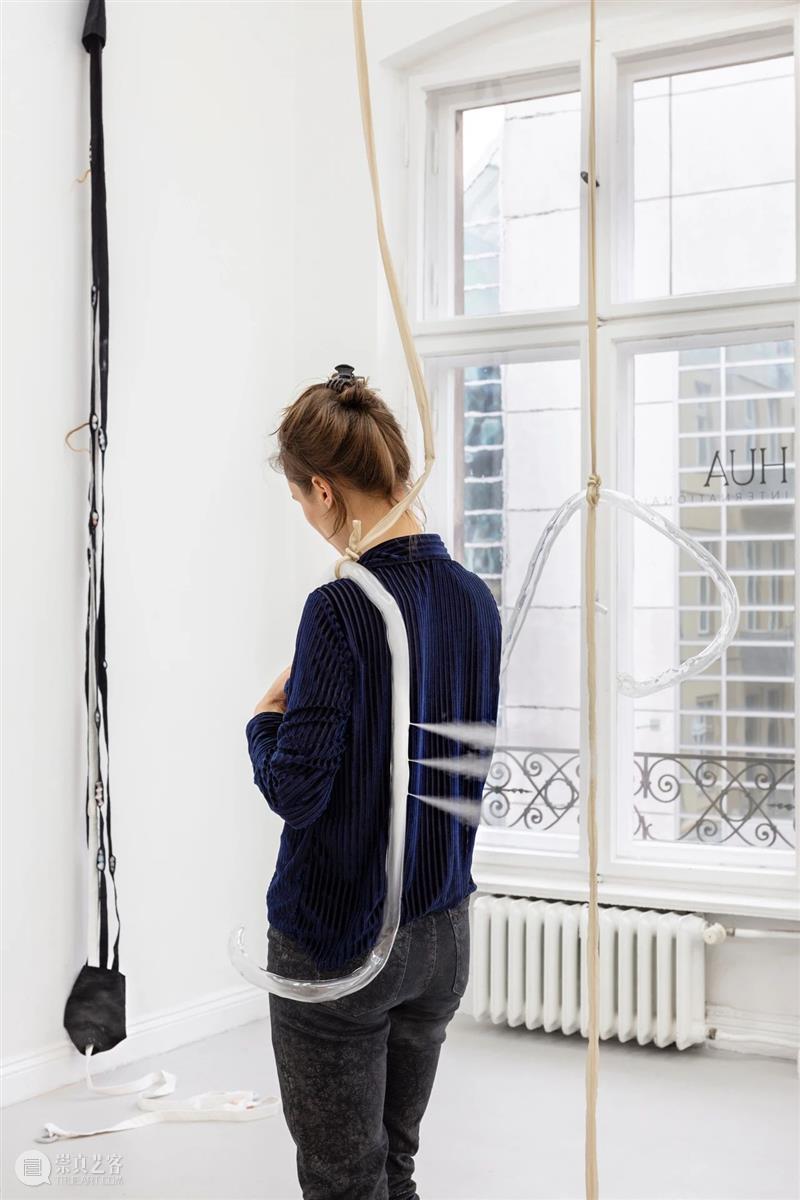

关于艺术家
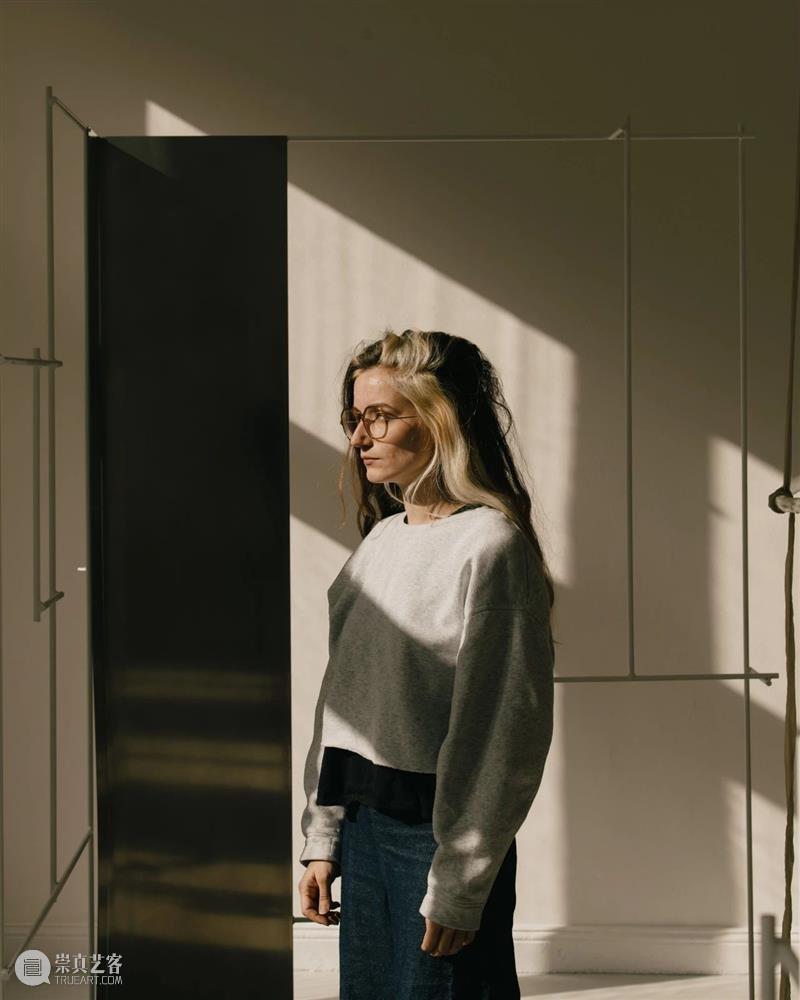
范尼·吉奎尔的作品在装置、雕塑和行为之间游走,并开发出容纳不同元素的空间,这些元素预设了一个激活的场景。雕塑作为身体的延伸,并通过手势激活,质疑身体/ 物体、自我和他人之间的关系。通过这种方式,她的作品探索了有生命的和无生命的、空间和时间在行动中和行动后的关系。这些作品将个人/ 集体、私人/ 公共、亲密/ 遥远等二元论概念之间的空间和肉体渗透性发挥出来。这些作品需要行为支撑,同时也存在于行为之外的编舞和即兴表演的网络中。她的作品近期在法国布雷斯特Passerelle Centre d'art contemporain、比利时布鲁塞尔Loto、雷恩美术馆,雷恩国际美术馆等地举办个展。
Fanny Gicquel’s works move between installation, sculpture and performance and develop spaces that accommodate different elements which presuppose a scenario of activation. The sculptures act as extensions of the body and are activated through gestures that question the correlation of the body/object and the self and the other. In this way, the work explores the relationship between the animate and the inanimate, space and time during and after the actions. These works bring into play the spatial and corporeal permeability of the dualism between notions of individual/collective, private/public, Intimate/distant. The works require the performance and also exist outside it in a network of choreography and improvisation. Her work has recently been presented in solo exhibitions at Passerelle Centre d’art contemporain, Brest, France (2020); Loto, Brussels, Belgium (2020); Museum of Fine Arts, Rennes (2019); Maison Internationale de Rennes, Rennes (2018).
| 关于户尔空间
| About Hua International
户尔空间位于柏林和北京两地。作为一间新锐全球性画廊,户尔空间秉持着国际立场与合作精神,致力于潮流激变的全球艺术市场。画廊于2017年创立,在跨时区的两个空间内,积极倡导着国际化的艺术项目,携新兴艺术家和成熟的国际艺术家一道,呈现跨学科、表演性与社会参与的艺术。
画廊的选址分别位于两个充满活力的艺术区的中心。其中,柏林空间地处波茨坦大街一座历史悠久的战前建筑中,而北京空间则于2020年8月搬迁至知名的798艺术区。户尔空间还组织策展项目和艺术合作,追寻新的创作和叙说方式,持续推进当代艺术的进程。在艺术世界持续发生构造性变化的时代,户尔空间在运作模式上注重灵活性,实验性与合作性,致力于推进在艺术市场内全新而独特的艺术创作。
Hua International is a contemporary art gallery based in Berlin and Beijing. Driven by a cosmopolitan and collaborative ethos, Hua International is a new global gallery for a fast-changing global art market. Founded by Hua in 2017, the gallery champions a cosmopolitan program across its two spaces, featuring emerging and established international artists with a special emphasis on cross-disciplinary, performative, and socially-engaged art.
The gallery has positioned itself at the epicenter of two vibrant art districts. In Berlin, it is located in a historic, pre-war building situated in Potsdamer Strasse; in Beijing, the gallery relocated to the acclaimed 798 Arts District in August 2020. Hua International also hosts curatorial projects and artistic collaborations in order to pursue new avenues of production, discourse and promotion of contemporary art. In a time of tectonic shifts in the art world, flexibility, experimentation and collaboration are key components of the gallery’s model in promoting works of art that are unique and new to the market.
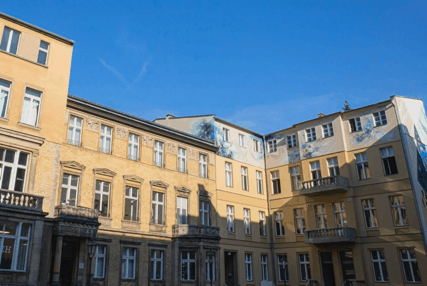
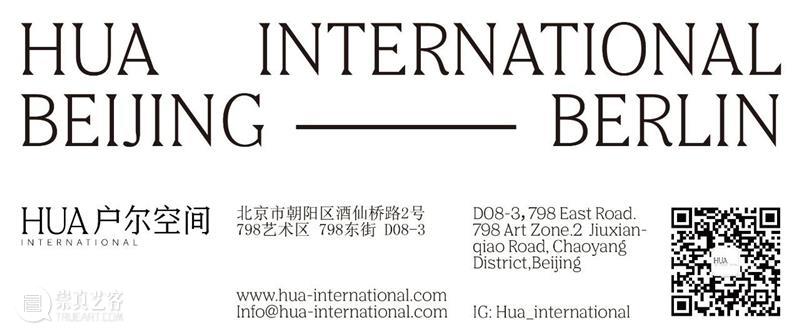


已展示全部
更多功能等你开启...





 分享
分享